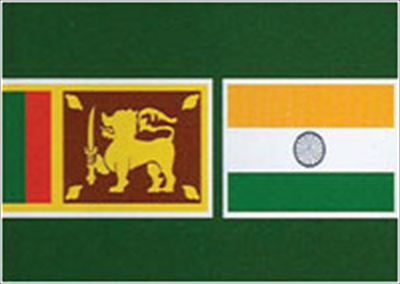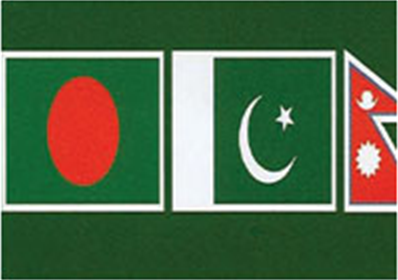South Asia: Economy
m (Jyoti moved page Economic Reform and Trade Performance in South Asia to South Asia: Economy without leaving a redirect) |
Revision as of 11:25, 18 November 2017
This is a collection of articles archived for the excellence of their content. Readers will be able to edit existing articles and post new articles directly |
Economic Reform and Trade Performance in South Asia
REVIEWS: Tricks of the trade
Reviewed by Dr Mahnaz Fatima
The authors of the book under review attempt to gauge the outcomes of trade and investment liberalisation measures undertaken in the ’90s in South Asia. There are six chapters with the first one giving an overview. The remaining five are country-specific case studies on Bangladesh, India, Pakistan, Nepal, and Sri Lanka. Trade performance outcomes are also assessed against the backdrop of the impact of trade on income inequalities and poverty, although only in the case of Bangladesh.
Trade liberalisation measures have resulted in varied performance across key South Asian countries. Trade can affect employment and poverty only if the net impact is favourable on labour-intensive industries. In the case of Bangladesh, the growth performance was impressive during the ’90s, especially during the second half of the decade when it rose to 5.2 per cent per annum. However, the per capita income remained low at $370 as compared to the South Asian average of $440. Three liberalisation scenarios were drawn up for Bangladesh which were government-revenue neutral as tariff reduction was compensated for by taxation — direct or indirect. Income inequality worsened in all three cases, however less, so in the case of the direct taxation scenario gains of beneficiary segments are taxed away partially if not fully.
The high-income urban dwellers gained the most from liberalisation with selective indirect taxation. The incidence of poverty reduction is favourable only in the case of the direct taxation scenario. Supporters of liberalisation are qualified professionals as they gain the most from it. These comprise the pro-liberalisation reform lobby in all countries regardless of the impact on low-income segments.
Having said that, liberalisation significantly affected the external sector in Bangladesh whose economy is now more integrated with the global economy. Exports increased by seven percentage points during the ’90s and imports increased by six percentage points. The current account deficit lowered and the share of foreign trade in GDP increased from 17 per cent to 29 per cent during the same period. However, this was achieved through extreme product specialisation which has raised vulnerability. The overall budget deficit expanded by 0.6 percentage points during the ’90s. This indicates that increase in trade through duty reduction was not compensated by commensurate taxation measures for revenue generation despite higher rates of economic growth which was also not shared equitably as mentioned above.
For India, trade liberalisation in 1991 was a paradigm shift from its planned economy. Indian economic reforms began with an emphasis on the external sector. It began with an initial devaluation, partial removal of the import licensing system, and reduction in some tariff rates and graduated to full convertibility of the Indian rupee on the current account, partial convertibility on the capital account, and removal of the quantitative restriction (QR) regime.
Openness of the Indian economy increased by over eight percentage points during the ‘90s as tariff barriers came down. However, global competitiveness did not improve significantly for India’s trade performance rank improved by 2/3 points as compared to China whose rank improved by 21 and 27 points on exports and imports respectively during the same period. Also, India’s exports to the GDP ratio tapered off after mid-’90s till the end of the decade. Sri Lanka had a similar experience. Similarly, the Indian FDI shows mixed trends especially after 1997/98. While the impact of Indian liberalisation reforms has been mixed, especially on exports and foreign direct investment, it was the share of technology and knowledge-intensive exports that increased whereas the share of labour-intensive exports to total exports decreased. So even though the Indian experience has been in line with global trends, it could not have had a favourable distributional impact within the country.
While the impact of Indian trade reforms on employment, inequality and poverty is not determined, the future of Indian trade reforms depends upon their welfare impact and its equitous distribution among the various segments of society. Thereby, the political-economic determinants of trade reforms also gain salience.
India and Sri Lanka will both need to determine why their exports growth tapered off in the mid ’90s. Equally important is it for India to determine whether to focus on labour-intensive exports or technology and knowledge-intensive exports. That is, the crucial question here is whether to improve upon welfare through labour-intensive exports or to gain global market share through knowledge-intensive exports. India may decide upon a blend of the two. However, it is important to note that even though India opened up, its international competitiveness improved only marginally and the welfare impact is not determined. So should liberalisation reforms aim at more openness for its own sake or on global integration for the sake of greater national integration and welfare of the people?
The case study on Pakistan gives an accurate summary of the country’s trade and investment policy reforms. Despite comprehensive reforms, the pattern of trade is characterised by instability during the ’90s. The major determinants of demand for Pakistan’s exports are found to be incomes of trading partners and real exchange rates. The benefits of trade reforms were very limited for Pakistan even in terms of trade and investment performance. The impact of liberalisation reforms on inequality and poverty in Pakistan is, therefore, besides the point.
Landlocked Nepal is also dependent on trade with India and the Sri Lankan security situation is a major determinant of its economic performance. As for the other three countries, the issues of employment and poverty remain even if exports are favourably affected due to liberalisation reforms, for improved trade performance should be a means to societal welfare and not an end in itself. The latter view is pushed by the upwardly mobile urban dwellers who benefit disproportionately more from trade liberalisation. Trade gains, therefore, need to be viewed contextually before pronouncing them as an unqualified success.
Economic Reform and Trade Performance in South Asia
Edited by Omar Haider Chowdhury and Willem Van der Geest
The University Press Limited, Dhaka.
Available with Oxford University Press, Plot # 38, Sector 15,
Korangi Industrial Area, Karachi.
Tel: 111-693-673.
Email: ouppak@theoffice.net
Website: www.oup.com.pk
ISBN 984-05-1731-7

